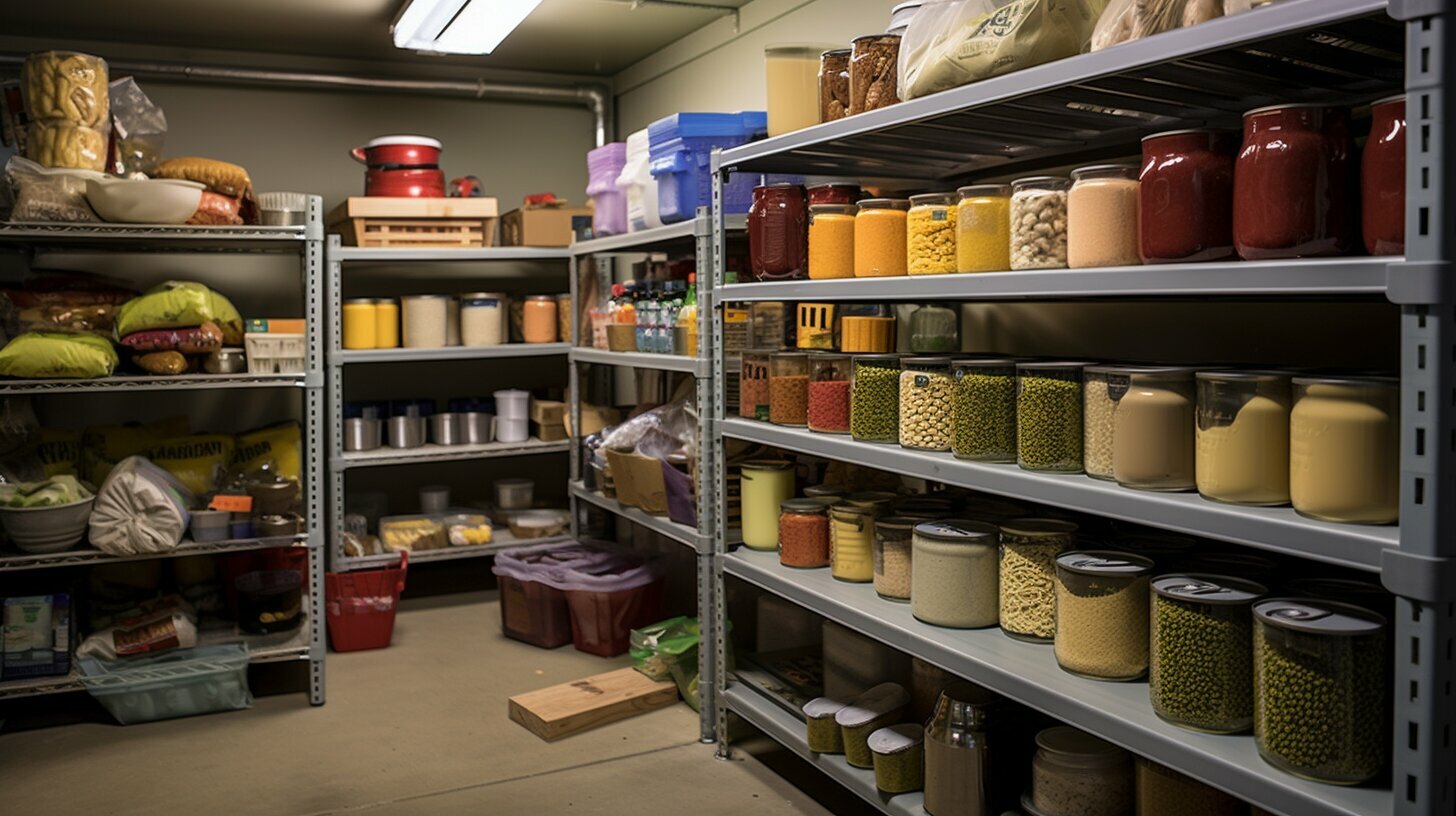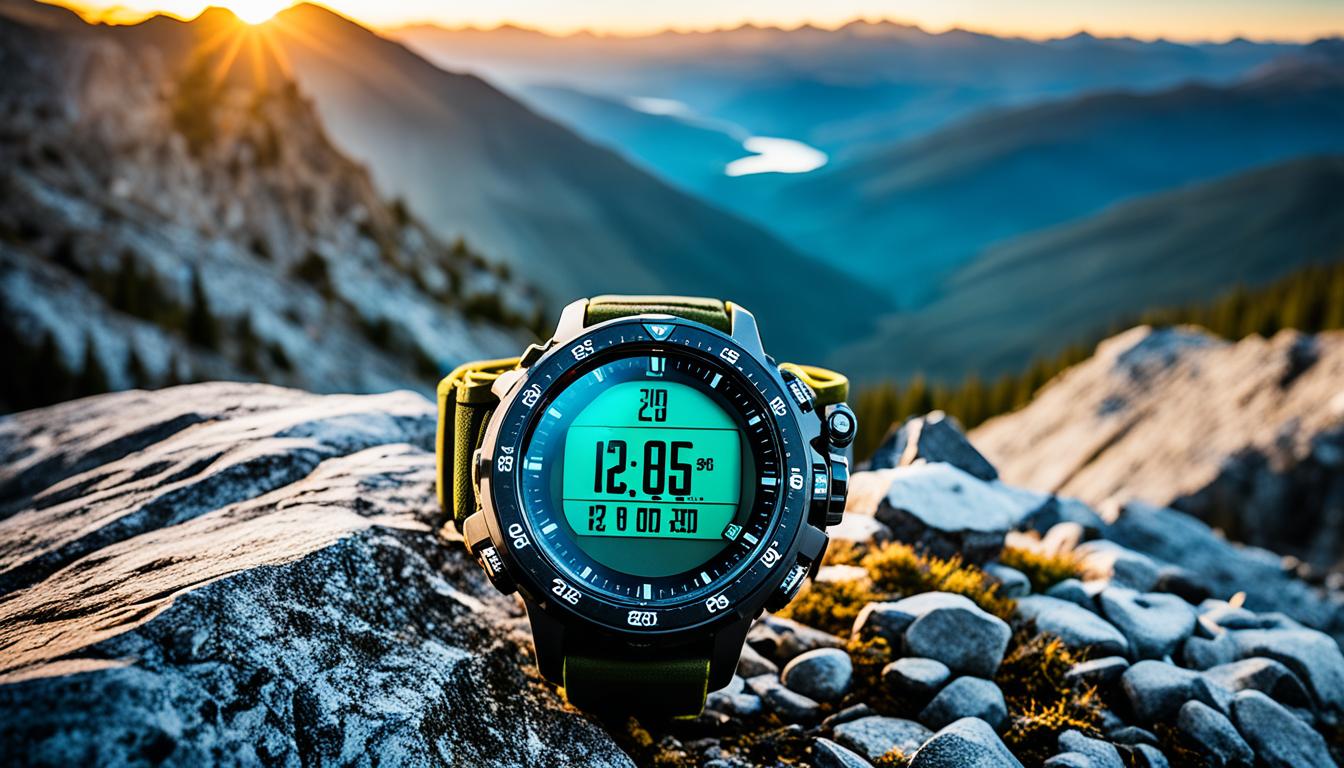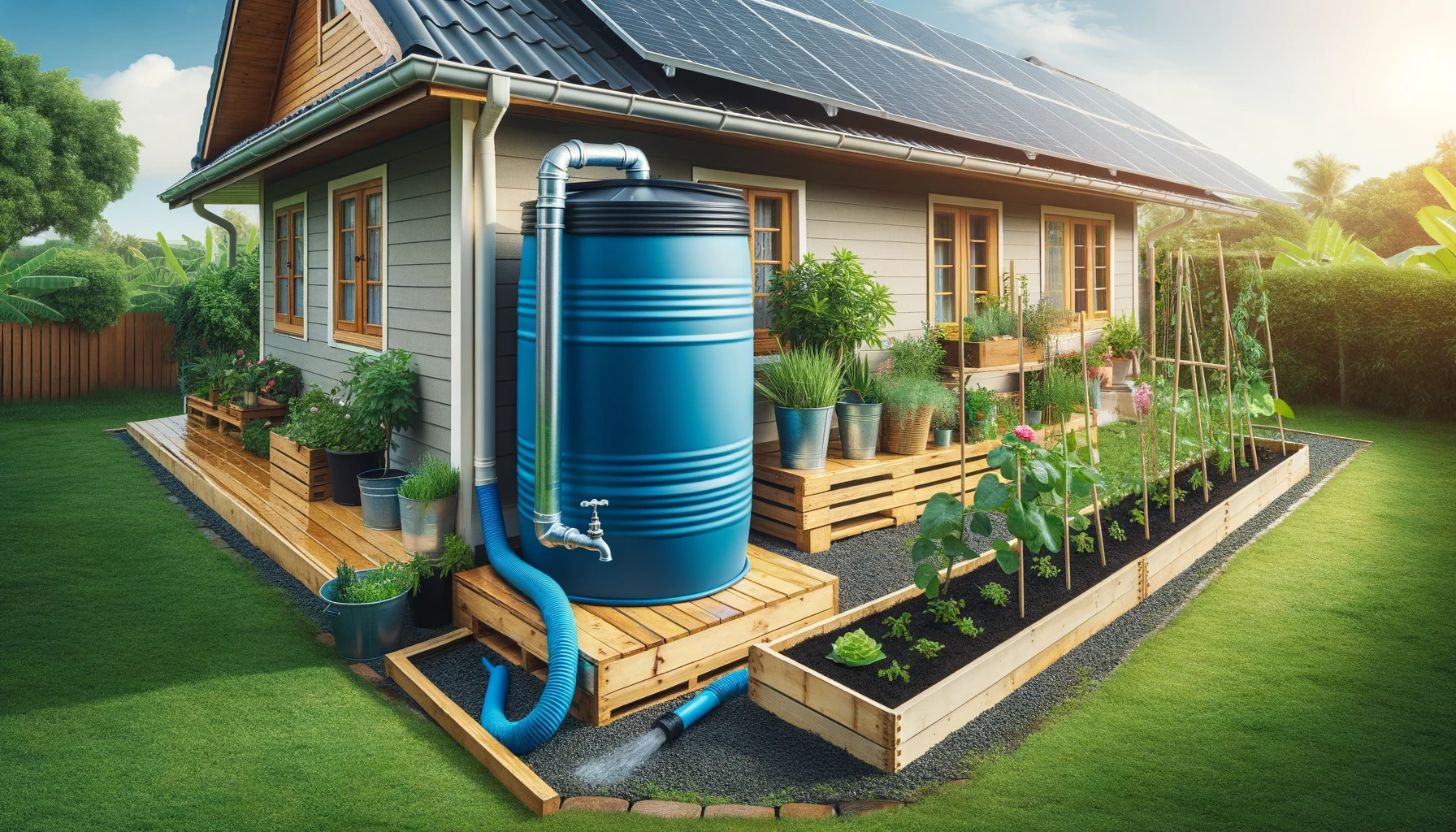Emergencies and disasters can strike when you least expect them. Being prepared and having the necessary supplies can make all the difference in ensuring your survival. Prepping for emergencies and disasters can seem daunting, but with the right guidance, it can be a straightforward and crucial process.
In this beginner’s guide, we will provide you with an overview of what prepping entails and the essential steps you need to take to start prepping for survival. We will cover the basic prepping checklist, the necessary supplies, and how to create a comprehensive emergency plan.
By the end of this article, you will have a solid understanding of how to start prepping for emergencies and disasters to ensure your survival.
Key Takeaways
- Being prepared for emergencies and disasters is crucial for your survival.
- Prepping for survival is a straightforward process with the right guidance.
- Creating a comprehensive emergency plan and having the necessary supplies should be a top priority in your prepping efforts.
Understanding the Basics of Prepping
Prepping is all about being prepared for emergencies and disasters. To ensure your survival during challenging times, you need to have a plan in place and the right supplies on hand. Here are the prepping essentials that you need to know:
Prepping Checklist
Before you start prepping, it’s important to have a plan in place. This starts with creating a prepping checklist that outlines the supplies you need to have on hand. Your prepping checklist should include:
Disclosure: When you buy through links on our site, we may earn an affiliate commission.
- Non-perishable food items
- Clean drinking water
- Medical supplies and medications
- First aid kit
- Survival gear such as flashlights, batteries, and radios
- Clothing and comfortable footwear
- Tools such as knives, saws, and axes
Having a prepping checklist ensures that you have all the necessary supplies to survive in case of an emergency or disaster.
Prepping Supplies
Once you have your prepping checklist ready, it’s time to start gathering your supplies. Some of the essential prepping supplies that you need to have on hand include:
- Water filtration system
- Long-term storage food items
- Fire starter tools such as matches or lighters
- Tents, tarps, or other temporary shelters
- Cordage such as paracord or rope
Make sure to invest in quality prepping supplies that will last you a long time. Look for durable equipment that can withstand harsh conditions and ensure your safety.
By understanding the basics of prepping, you can be well-prepared to face any emergency or disaster. With a solid prepping checklist and essential supplies on hand, you can ensure your survival and that of your loved ones.
Assessing Potential Risks and Threats
If you want to start prepping for emergencies or disasters, one of the key steps is to assess potential risks and threats in your area. By identifying the most likely emergencies or disasters that could occur, you can tailor your prepping efforts to suit them.
Start by researching the types of emergencies and disasters that have occurred in your area in the past, such as hurricanes, floods, wildfires, or earthquakes. You can also check with local authorities or emergency management offices to get more information about potential risks.
After identifying the most likely emergencies or disasters, create a list of the supplies and equipment you will need to handle them effectively. This may include items such as first aid kits, fire extinguishers, flashlights, and emergency radios.
It’s also essential to develop a plan for how you will respond to each type of emergency or disaster. This should include a communication plan to stay in touch with loved ones and authorities, as well as an evacuation plan in case you need to leave your home.
By assessing potential risks and threats and tailoring your prepping efforts accordingly, you can be better prepared to handle a wide range of emergencies or disasters that may occur.
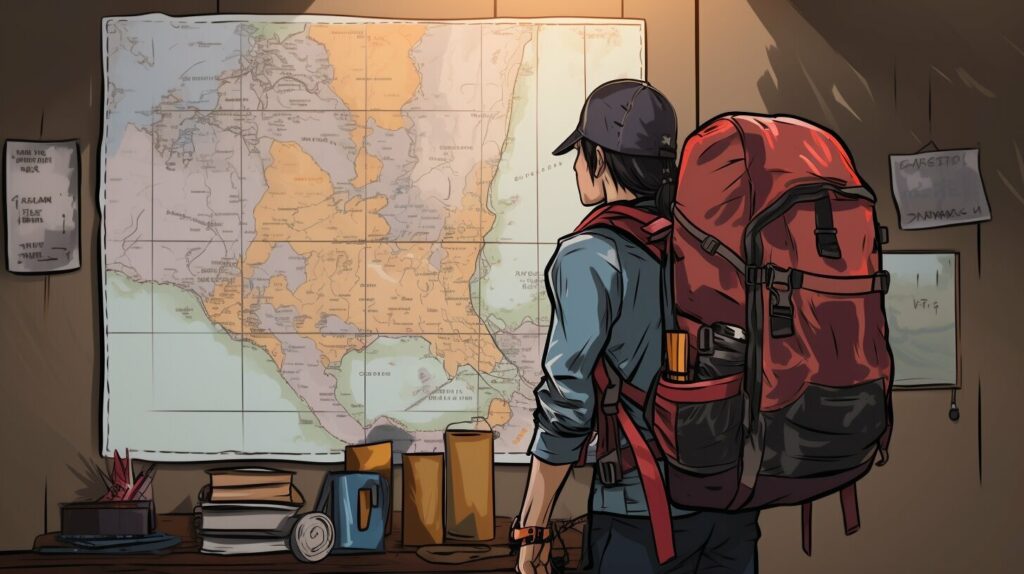
Creating an Emergency Plan
Developing an effective emergency plan is critical in emergency preparedness. Having a solid plan in place can help you make quick decisions and take necessary actions during emergencies. Here are some steps to help you create an emergency plan:
Identify Potential Risks and Threats
The first step in creating an emergency plan is to identify potential risks and threats in your area. Research the most likely disasters and emergencies that could affect you, such as hurricanes, floods, or earthquakes. Once you have identified the risks, tailor your prepping efforts accordingly.
Determine an Evacuation Route
It’s essential to have a predetermined evacuation route in case of an emergency. Identify multiple routes to your escape destination and make sure everyone in your household is familiar with them. Additionally, determine alternative routes in case your primary route is blocked or impassable.
Communicate Effectively
Communicating effectively with your loved ones during emergencies is crucial. Develop a communication plan that includes a list of emergency contacts and their phone numbers. Make sure everyone in your household has a copy of the list and knows how to reach out to each other. Also, establish a meeting place or a way to let others know your whereabouts in case you get separated.
Prepare Supplies
Make sure you have enough supplies to last at least three days in case of an emergency. Include food, water, first aid kit, sanitation supplies, and any necessary medications. Additionally, prepare a “go-bag” that contains essential items such as clothes, blankets, and personal hygiene items. Keep your supplies in a designated spot that everyone in your household knows about.
Practice Your Plan
Once you have developed your emergency plan, practice it with your household. Conduct regular drills to ensure that everyone knows what to do and where to go during an emergency. Practice evacuating your home and meeting at your designated location. Make necessary adjustments to your plan based on what you learn during these drills.
Creating an effective emergency plan takes time and effort, but it could save your life and the lives of your loved ones. Make sure you revisit your plan regularly to ensure it remains up to date and relevant.
Building an Emergency Food Supply
When it comes to prepping supplies, building an emergency food supply should be a top priority. In emergency situations, access to food can become limited or even non-existent. A well-stocked pantry or storage area can provide peace of mind and ensure that you have the necessary nourishment to survive during difficult times.
Start by creating a list of non-perishable food items that you and your family enjoy. Focus on high-protein, nutrient-dense foods that will sustain you for longer periods. Examples include canned meats, beans, vegetables, fruits, and soups. Consider purchasing freeze-dried or dehydrated foods for longer-term storage.
When stocking up on prepping supplies, ensure that you have enough food to last at least two weeks. If possible, aim for a three-month supply of non-perishable items. You should also include a variety of snacks, such as granola bars and trail mix, for quick energy boosts during emergencies.
When storing your emergency food supply, be sure to keep it in a cool, dry place. Proper storage conditions will help to extend the shelf life of your prepping supplies. Additionally, make a point to rotate your stock regularly to ensure that your food remains fresh and edible.
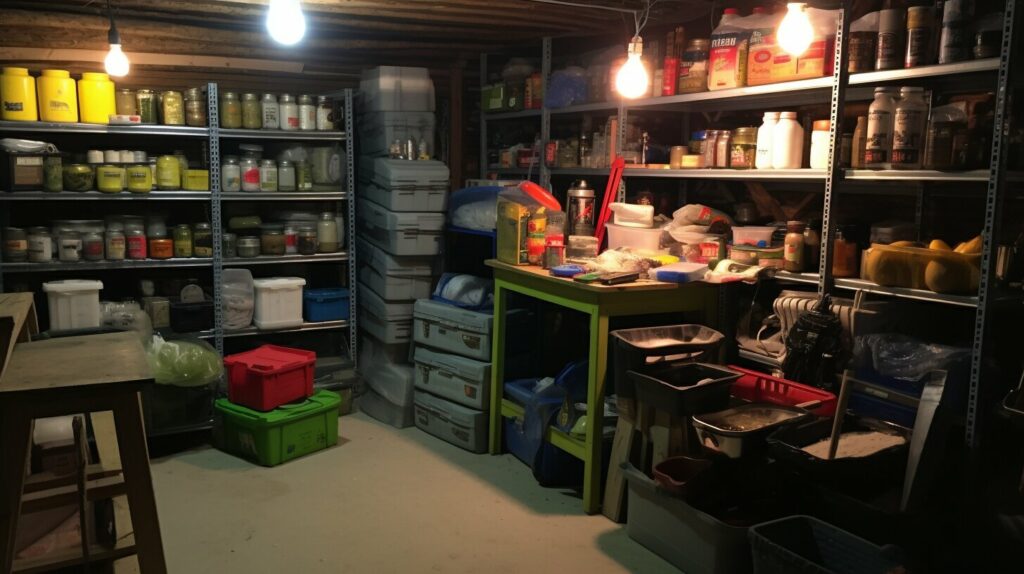
In addition to non-perishable food items, it’s also a good idea to include a portable stove or other means of cooking your food. This will allow you to prepare hot meals and increase your overall comfort during a crisis. Be sure to also include utensils, plates, and other necessary cooking equipment in your prepping supplies.
Building an emergency food supply is a crucial aspect of emergency preparedness. By taking the time to stockpile non-perishable items and learn essential prepping skills, you can ensure that you and your family are ready for any situation that may arise.
Securing Safe Drinking Water
During emergencies, access to safe drinking water is crucial. Water sources may become contaminated, or there may be disruptions in the water supply system. Therefore, it is essential to include water storage and filtration methods in your prepping supplies.
Storing Water
Experts recommend storing at least one gallon of water per person per day for a minimum of three days. You can store water in plastic containers, such as those used for juice or milk. Make sure to clean and sanitize the containers before filling them with water. Store the containers in a cool, dark place away from direct sunlight and heat sources.
If you are preparing for long-term emergencies, consider investing in larger water storage options, such as water barrels or cisterns. These can hold hundreds of gallons of water and can be connected to a rainwater harvesting system for a sustainable water supply.
Filtering Contaminated Water
In case of contamination or if you are unable to store enough water, it’s important to know how to filter and purify water. There are several methods for filtering contaminated water, including boiling, using chemical treatments, and using water filtration systems.
Boiling water is the most reliable method for killing bacteria, viruses, and parasites. Bring water to a rolling boil for at least one minute (or three minutes at higher elevations) before allowing it to cool.
Chemical treatments, such as chlorine or iodine tablets, are also effective in killing harmful organisms. Follow the instructions on the treatment package for best results.
Water filtration systems, such as portable filters or gravity-fed filters, can remove contaminants from water. Make sure to choose a filter that is effective against the specific contaminants found in your water source.
Ensuring a Reliable Water Source
In addition to storing water and filtering contaminated water, it’s important to have a reliable water source in case of disruptions.
If you have access to a natural water source, such as a lake or river, make sure to purify it before drinking or using it for cooking. You may also consider investing in a well or other long-term water supply options.
Finally, it’s essential to have a plan for collecting and storing rainwater. Rainwater harvesting systems can provide a sustainable water supply, especially in areas with frequent rainfalls.
By including water storage, filtration, and sourcing methods in your prepping supplies, you can ensure access to safe drinking water during emergencies.
Developing Self-Sufficiency Skills
Developing self-sufficiency skills is essential for surviving emergencies and disasters. When faced with challenging situations, having the necessary skills can make all the difference in your ability to cope and overcome them. Here are some skills to consider developing:
- First aid: Knowing how to provide first aid can save lives in emergency situations. Take a first aid course or learn basic first aid techniques on your own.
- Fire starting: Being able to start a fire can provide warmth, light, and the ability to cook food. Practice fire-starting techniques until you are proficient.
- Foraging: Knowing which plants are safe to eat and how to find them can provide a reliable food source in emergency situations.
- Self-defense: Knowing how to defend yourself and your loved ones can provide peace of mind and increase your chance of survival in dangerous situations.
By developing self-sufficiency skills, you can increase your resilience and self-reliance in emergency situations. Consider taking classes or practicing these skills on your own to improve your emergency preparedness.

“Self-reliance is the only road to true freedom, and being one’s own person is its ultimate reward.” – Patricia Sampson
Creating a Shelter and Survival Gear
Having a suitable shelter and the necessary gear is crucial for your survival during emergencies. Your shelter should protect you from harsh weather conditions, provide a comfortable living space, and keep you safe from potential threats. Your survival gear should include essential tools and equipment that will help you stay alive, healthy, and self-sufficient.
When choosing a shelter, consider factors such as location, size, durability, and accessibility. Your shelter should be located in a safe area, away from potential dangers such as floods, landslides, or high-traffic zones. It should be large enough to accommodate you and your family, as well as any necessary supplies and equipment. Its durability should withstand harsh weather conditions, and it should be easily accessible in case of emergencies.
Your survival gear should include essential items such as a first-aid kit, a multi-tool, a fire starter, a source of light and heating, and a means of communication. You should also consider storing additional supplies such as clothing, blankets, sleeping bags, and hygiene items. These will help you stay warm, dry, and clean during emergency situations.
Investing in high-quality prepping supplies will ensure that you have everything you need to survive during emergencies. You can also consider learning essential survival skills such as building a shelter, purifying water, and foraging for food. These skills will enhance your self-sufficiency and increase your chances of survival.
Remember, your shelter and survival gear should be regularly maintained and updated. Check your supplies for expiration dates and replace them as needed. Practice building your shelter and setting up your gear to ensure you are prepared in case of emergencies.
Establishing a Communication Plan
During emergencies, communication is critical to your survival. You need to be able to stay in touch with loved ones, authorities, and relevant emergency channels even in the absence of traditional communication methods. Here are some tips to help you establish a communication plan:
- Designate an out-of-area contact: Choose a friend or family member who lives far from your area and ask if they would be willing to be your point of contact during an emergency. Make sure everyone in your household knows the contact’s name, phone number, and email address.
- Have multiple communication methods: Don’t rely on just one communication method, such as cell phones, which may not work during an emergency. Instead, have a backup plan, such as two-way radios, satellite phones, or walkie-talkies.
- Learn how to use emergency communication devices: Make sure you know how to use the communication devices you have, including how to tune into emergency frequencies.
- Consider social media: In some cases, social media platforms such as Twitter and Facebook can be a useful tool for obtaining emergency information and communicating with others.
- Practice your plan: Conduct regular communication drills with your family to ensure everyone knows what to do in case of an emergency.
By establishing a communication plan, you can stay connected with others during emergencies and increase your chances of survival.
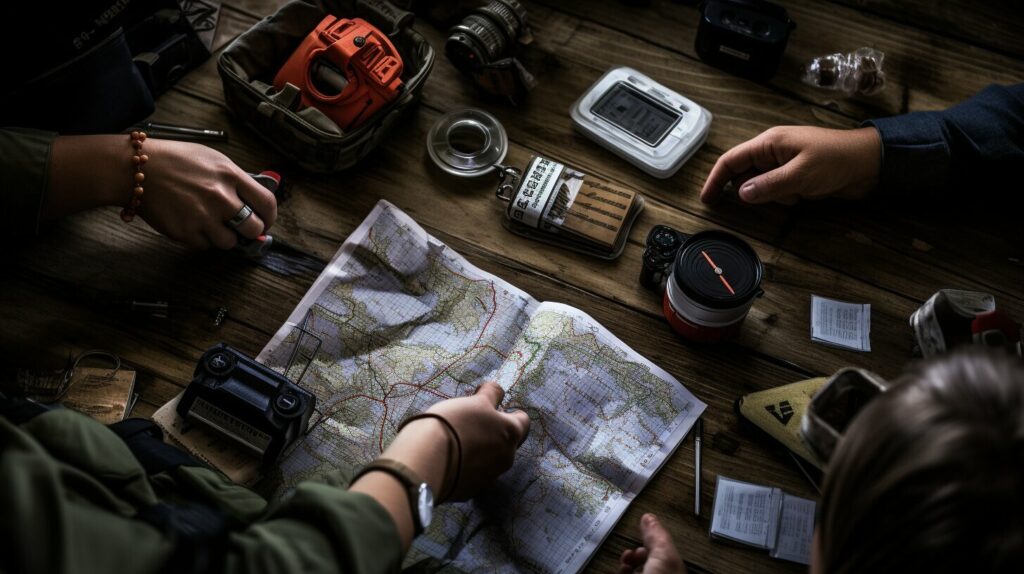
Maintaining Mental and Physical Well-being
During emergency situations, it is crucial to prioritize your mental and physical health. The stress and anxiety that come with prepping for emergencies and facing disaster can take a toll on your well-being, which is why it is important to take proactive measures to care for yourself.
Here are some tips for maintaining your mental and physical well-being:
- Stay informed: Keep yourself updated on the latest news and emergency protocols in your area. This will help you stay prepared and reduce stress levels.
- Practice self-care: Take care of yourself physically by getting enough sleep, eating well, and exercising regularly. Make sure to also take breaks from prepping and allow yourself time to relax and recharge.
- Stay connected: Stay in touch with your loved ones and support network. This can help you feel less isolated and provide emotional support during difficult times.
- Practice mindfulness: Incorporate mindfulness practices such as meditation or deep breathing exercises into your routine. This can help reduce stress and increase resilience.
In addition to these tips, it is important to recognize the signs of stress and seek help if needed. This can include reaching out to a support network, seeking professional counseling, or utilizing mental health resources such as the Disaster Distress Helpline.
Remember, taking care of your mental and physical well-being is vital to your overall survival. By prioritizing self-care and seeking support when needed, you can increase your resilience and enhance your prepping efforts.
Continuing Education and Preparedness Updates
Now that you have the basics of prepping covered, it’s important to stay updated on the latest prepping tips and emergency preparedness information. The world is constantly changing, and new threats may emerge that you need to prepare for. Additionally, as you gain more experience with prepping, you may want to learn new skills or refine your existing ones.
One important resource for staying informed is the Federal Emergency Management Agency (FEMA). They offer a wealth of information on emergency preparedness, from creating a family communication plan to building a disaster supply kit. Their website also provides updates on current disasters and emergencies, as well as tips on how to stay safe during these events.
Another great way to learn about prepping is to join online communities and forums. These can be a valuable source of information, as you can connect with experienced preppers and get advice on specific prepping topics. Some popular prepping forums include thesurvivalistblog.net and prepperforums.net.
Finally, don’t forget to regularly assess your prepping efforts and make updates as needed. As you gain experience, you may find that certain items or skills are no longer necessary, and you may want to replace them with more useful items or skills. Continuously honing your prepping skills and supplies can make all the difference in a survival situation.
Remember, emergency preparedness is an ongoing process. By staying informed and continuously improving your prepping efforts, you can ensure that you and your loved ones stay safe during emergencies and disasters.

Conclusion
By now, you should have a good understanding of what prepping entails and why it is important. Remember, being prepared for emergencies and disasters can make all the difference in ensuring your safety and the safety of your loved ones.
Throughout this guide, we covered a wide range of topics including the basic prepping checklist, assessing potential risks and threats, creating an emergency plan, building an emergency food supply, securing safe drinking water, developing self-sufficiency skills, creating a suitable shelter and survival gear, establishing a communication plan, maintaining mental and physical well-being, and the importance of continuous education and preparedness updates.
By following the steps outlined in this guide, you can start your prepping journey today and take control of your safety and survival. Remember, being prepared does not mean you are paranoid or overly cautious. It simply means that you are proactive and responsible.
So, keep learning, keep practicing, and stay prepared for whatever comes your way. Stay safe!
FAQ
Q: What is prepping?
A: Prepping refers to the act of preparing and planning for emergencies and disasters. It involves acquiring the necessary supplies, developing skills, and creating a plan to ensure your survival in challenging situations.
Q: Why is prepping important?
A: Prepping is important because emergencies and disasters can strike unexpectedly, leaving you without access to essential resources. By being prepared, you can increase your chances of survival and minimize the impact of these events on your life.
Q: Where do I start with prepping?
A: To start prepping, begin by assessing your individual needs and the potential risks and threats in your area. Create a prepping checklist and gather the necessary supplies, such as food, water, shelter, and medical provisions. Develop a comprehensive emergency plan to guide your actions.
Q: How long should my emergency food supply last?
A: The duration of your emergency food supply will depend on your individual needs and circumstances. It is generally recommended to have at least a two-week supply of non-perishable food items for each person in your household.
Q: How can I ensure access to safe drinking water during emergencies?
A: To secure safe drinking water, consider storing water in clean, food-grade containers. You should aim for at least one gallon of water per person per day. Additionally, learn how to filter and purify contaminated water sources, and identify alternative water sources in your area.
Q: What self-sufficiency skills should I develop?
A: Developing self-sufficiency skills can greatly enhance your ability to survive during emergencies. Some essential skills to consider include first aid, fire starting, foraging for food, basic navigation, and self-defense.
Q: What should be included in my survival gear?
A: When creating your survival gear, prioritize items such as a reliable shelter (tent, tarp, or emergency blankets), a first aid kit, tools for fire starting, lighting sources, communication devices, and essential hygiene supplies. Tailor your gear to your specific needs and the potential risks in your area.
Q: How can I establish a communication plan during emergencies?
A: Establishing a communication plan involves designating a meeting point for your family, having a designated out-of-area contact, and determining alternative communication methods such as two-way radios or satellite phones. Ensure everyone in your household knows the plan and has access to important contact information.
Q: How can I maintain mental and physical well-being during survival situations?
A: To maintain mental and physical well-being, practice stress-management techniques, prioritize self-care, and remain physically active. Stay connected with loved ones for emotional support, and engage in activities that promote relaxation and mental resilience.
Q: How can I stay updated on emergency preparedness?
A: Stay informed by following reliable news sources, government agencies, and emergency management organizations. Attend workshops or seminars on emergency preparedness, and consider joining local community preparedness groups. Continuously update your knowledge and adapt your prepping efforts as needed.

